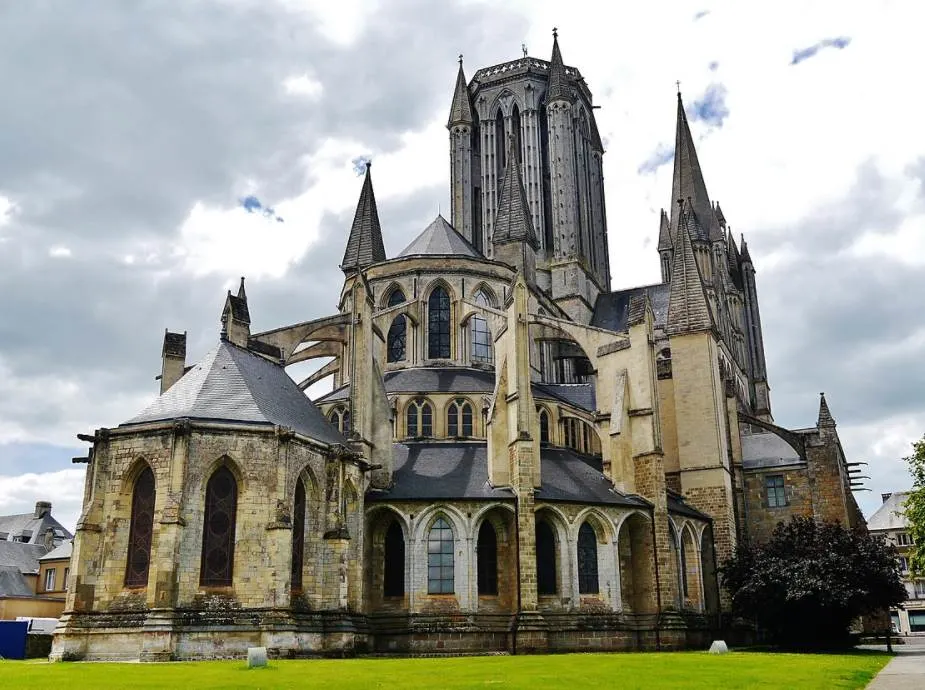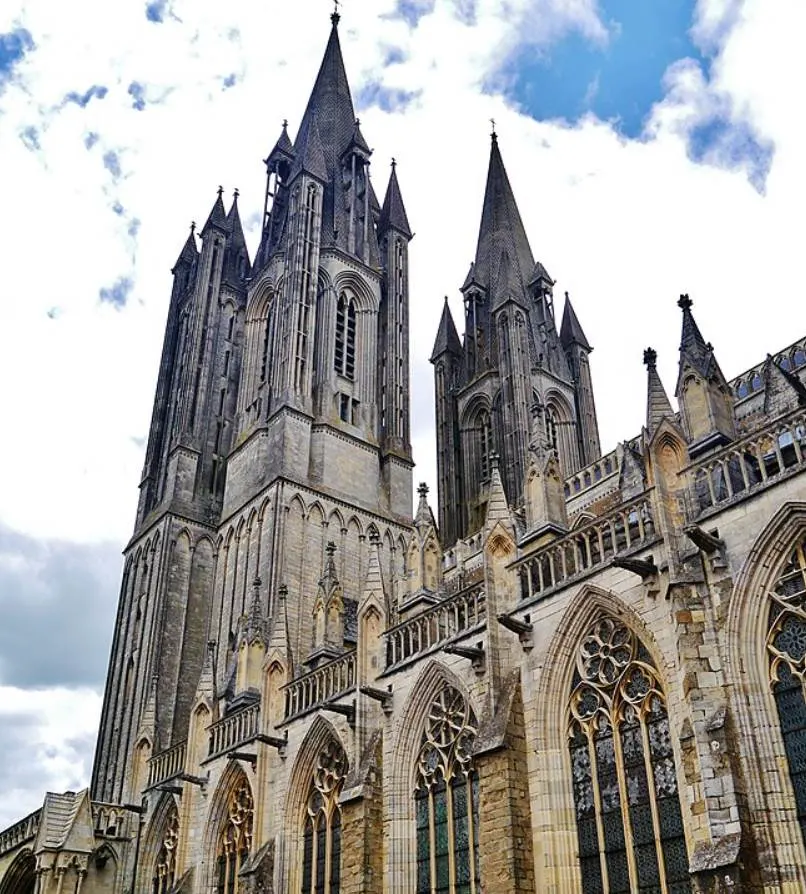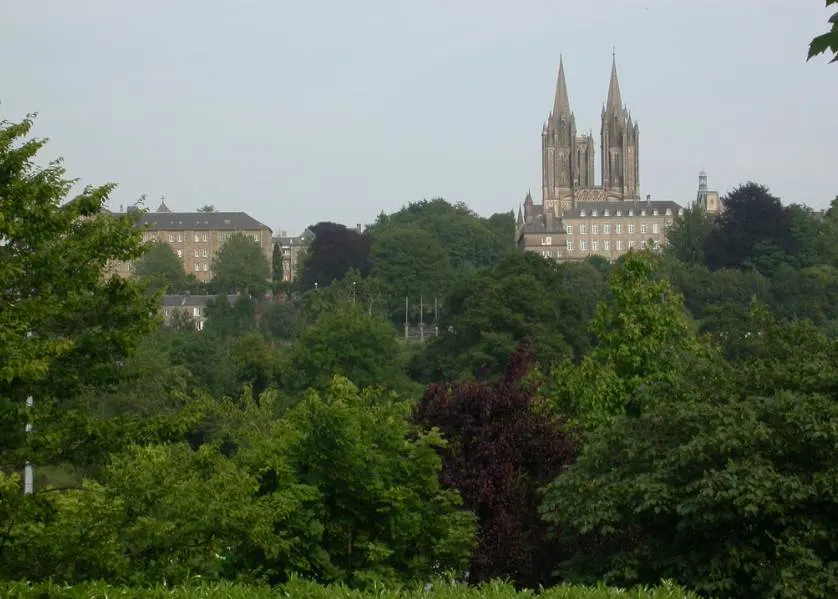A small town with just over 8,000 inhabitants in the Normandy region of France is home to one of the most amazing Gothic cathedrals you’ll ever come across.
In this article, we’ll take a closer look at some of the most interesting facts about Coutances Cathedral, a prime example of medieval architecture that pretty much looks the same today as it did during the 13th century.
1. The cathedral dominates the landscape in northwestern France
The countryside in northwestern France often looks vast and relatively uninteresting. There are some hidden treasures to be found in the Manche department of Normandy, including the famous Mont Saint Michel on the Cotentin Peninsula.
If you’re interested in medieval architecture then you can visit a small town called Coutances, a town that was named “Constantia” in 298 during the reign of Roman emperor Constantius Chlorus. He was one of the 4 emperors of the tetrarchy during the reign of the infamous Emperor Diocletian.
The construction of the Gothic cathedral in this location makes it all the more sarcastic that the town was established shortly before the most severe persecution of Christians in the Roman Empire.

2. A church has been present on this location since the 5th century
The persecution of Christians by Diocletian in the early 4th century was the prelude to the rise of Christianity in the Roman Empire. This started when Roman Emperor Constantine the Great signed the Edict of Milan in 313 A.D. which gave Christians more rights.
His conversion to Christianity marked the start of the construction of Christian churches throughout the Roman empire in the 4th and 5th centuries. The first church in Coutances was built in the 5th century, presumably by Saint Ereptiolus.
He was also the first Bishop of Coutances and the man who established the Diocese of Coutances. This was eventually merged into the Diocese of Coutances and Avranches in 1854 of which Coutances Cathedral is still the seat today.

3. The Gothic cathedral replaced an earlier Romanesque church
The Normans, a population that emerged from the intermingling of Norse People and West Francs during the early Middle Ages, invaded the region in the 9th century and destroyed the original church on this location.

The ruins of the church built by the first Bishop of Coutances were present for 150 years until Bishop Robert decided to build a new church. His work was continued by Geoffrey de Montbray and completed in the 11th century.
Little is known about this second church and although it could have featured elements of Norman architecture, it was likely completed in the Romanesque architectural style.
This Romanesque building was destroyed by a fire and replaced by the magnificent Gothic Cathedral we see today between 1210 and 1274.

4. The towers of the cathedral can be seen from the island of Jersey
The most prominent features of the cathedral are its twin towers with their distinctive Gothic spires. The base of the towers reaches a height of 57 meters (187 feet) and the spires reach a height of 80 meters (262 feet).
This means that they tower above the countryside of this part of Normandy and all other buildings in the small town of Coutances.
On a clear day, you can even see these towers from the island of Jersey, the largest island in the English Channel situated just off the coast of Normandy.

5. The cathedral features original 13th-century stained glass windows
The interior of the cathedral has that typically Gothic design that aims to somehow recreate Heaven on Earth. This sensation is achieved with pointy arches and windows which lead the view upward.
The most fascinating features inside the church are the original 13th-century stained glass windows. These can be found in the northern part of the transept and inside the Chapels of Saint Laud and Saint Marcouf.
These windows depict scenes from the lives of Saint Laud, Saint Marcouf, Saint George, Saint Thomas of Canterbury, and Blaise of Sebaste. The main stained glass window also depicts scenes from The Last Judgement.

More interesting facts about Coutances Cathedral
6. The man who continued the construction of the Romanesque church that preceded the Gothic cathedral was a Norman nobleman named Geoffrey de Montbray. He was a good friend of William, Duke of Normandy, a man who initiated the Norman Invasion of England in 1066.
William the Conqueror, as he is known today, was present at the consecration of this Romanesque church when it was completed in 1056, about a decade before he conquered large parts of England.
7. When we refer to the Romanesque church you might have the idea that this was just a small structure that preceded the massive Gothic Cathedral we can see today.
One of the most fascinating facts about Coutances Cathedral is that this Romanesque building was about the same size as the current church.
Although far from being the largest Gotic Cathedral in the world, it’s still pretty big. It has an exterior length of 95.17 meters (312 feet), an interior length of 87 meters (285 feet), and a maximum width of 33.7 meters (110 feet).

8. The official name of the cathedral is the Cathédrale Notre-Dame de Coutances which means that it was dedicated to the Virgin Mary. This is visible in the north aisle of the church which is decorated with medieval tiles featuring “fleur-de-lys” or lilies.
Lilies are both the emblem of the French royal family and a symbol that is associated with the mother of Jesus Christ.
9. Apart from the 13th-century stained glass windows and the amazing Gothic architecture, the interior of the cathedral features several other remarkable elements.
Just behind the main altar of the church, you can see 6 pairs of columns which represent the Twelve Apostles of Jesus. The lantern tower is a remarkable source of light that illuminates the entire church.

The circle inside the dome of the church represents Heaven, the square represents the Earth, and the octagonal design represents the Resurrection.
10. The church was built between 1210 and 1274 and its structure remains exactly today as it appeared upon completion in the 13th century. This is remarkable because it survived many devastating events in history.
The church was lightly damaged during the Wars of Religion in 1562 and repaired shortly after. It also escaped severe damage during the French Revolution as only the statues inside the niches were removed.
The town of Coutances was badly damaged during World War II and yet again, the cathedral survived without damage. These successive strokes of luck allow us to enjoy one of the most amazing examples of Gothic architecture in Europe today.

